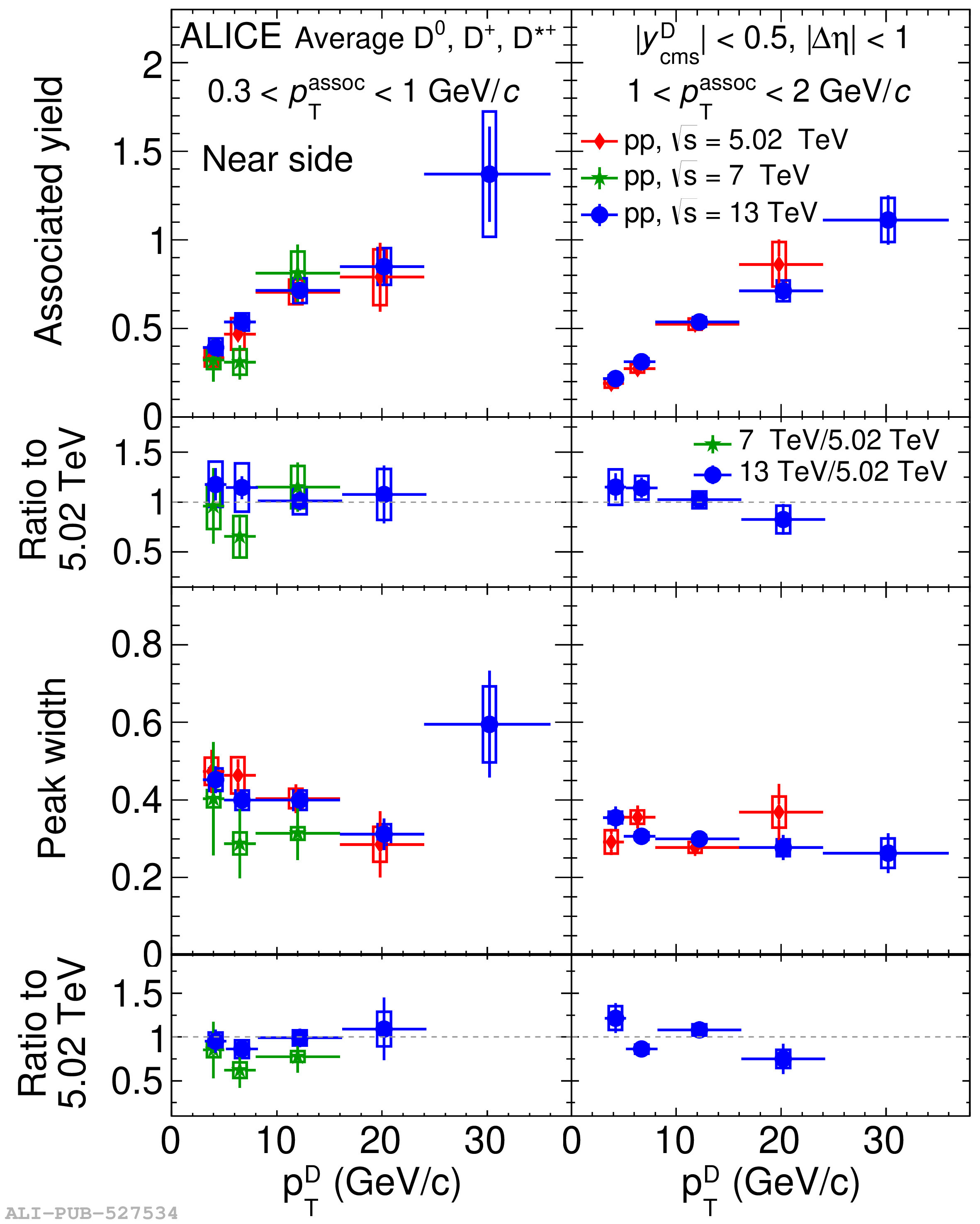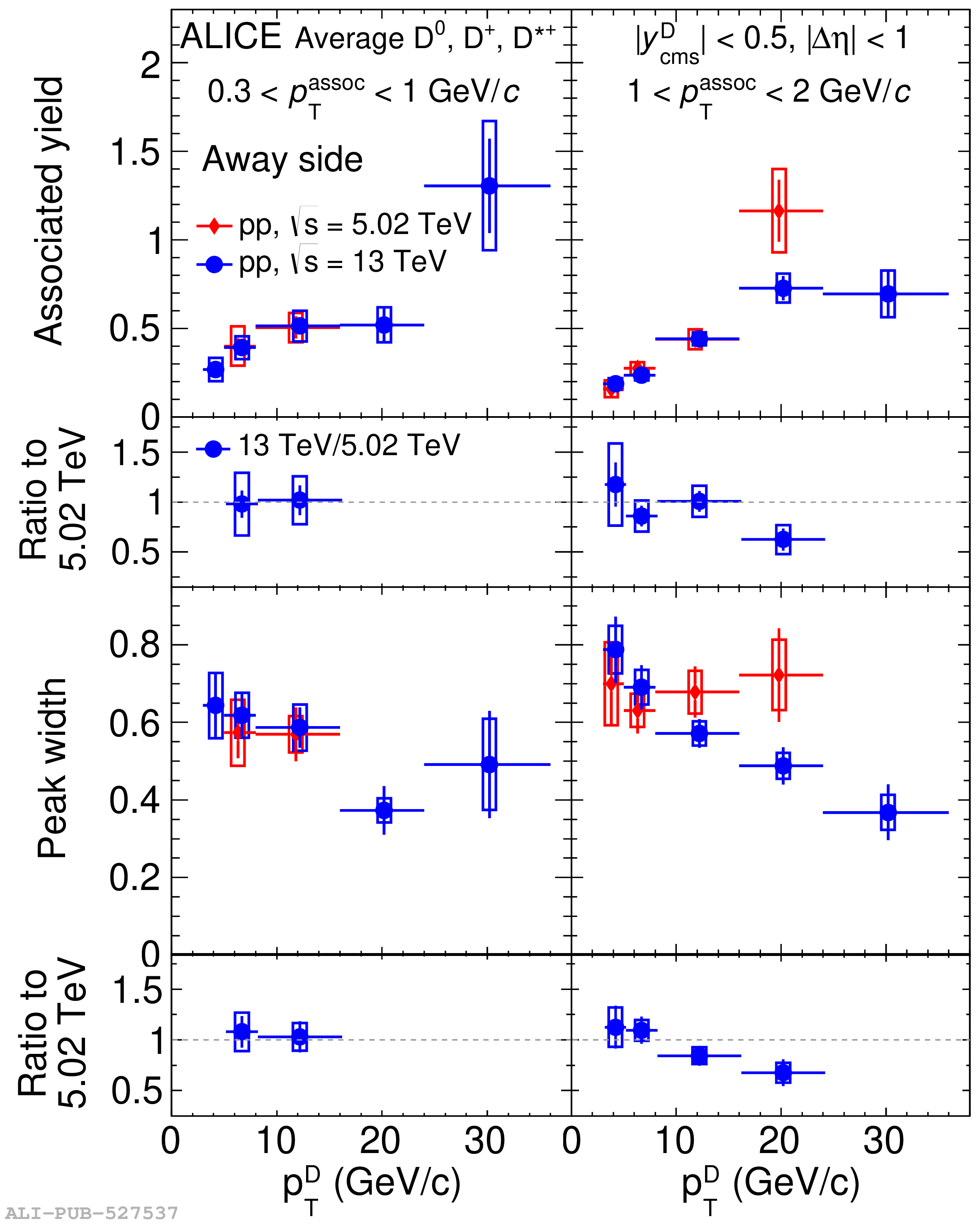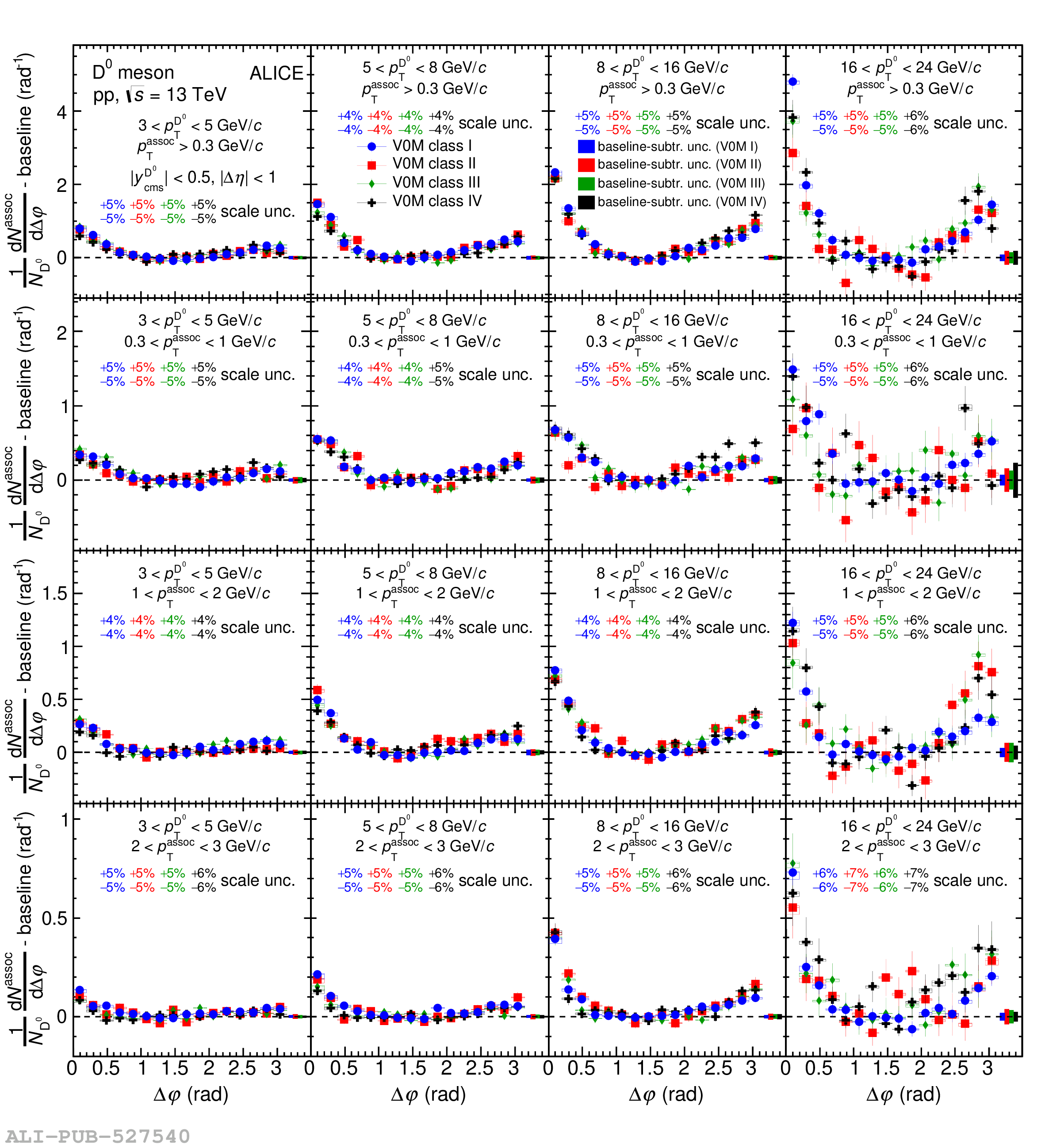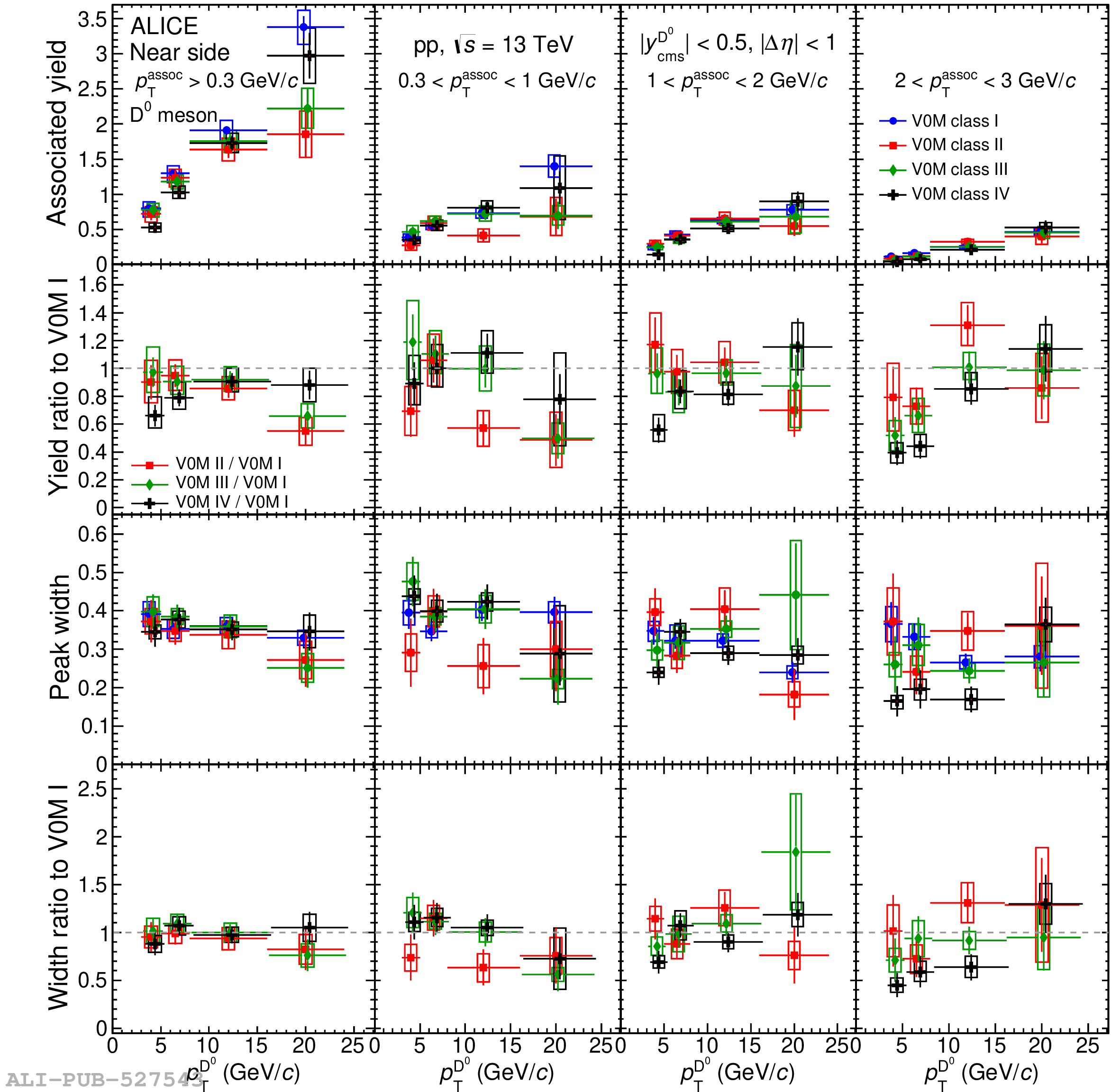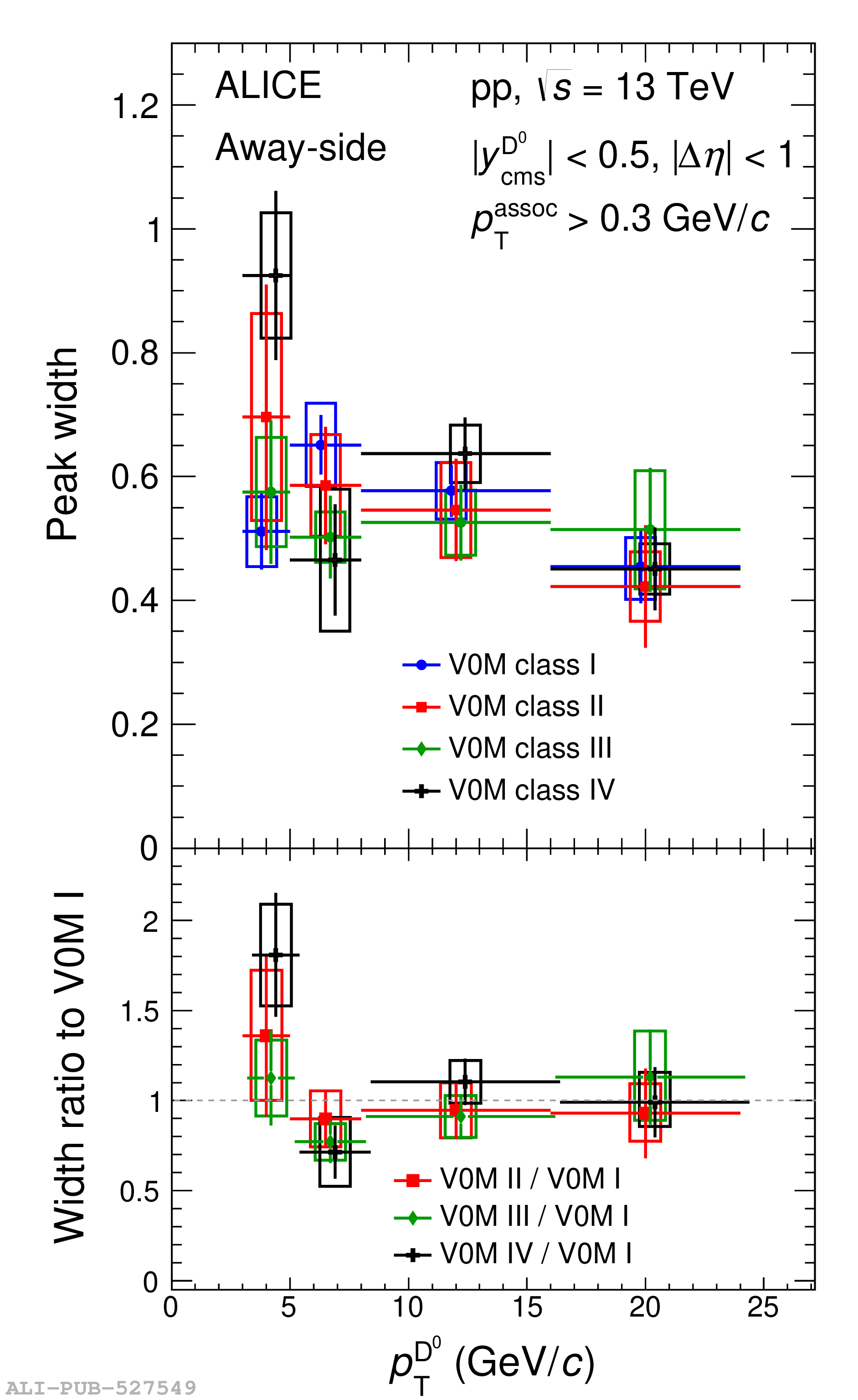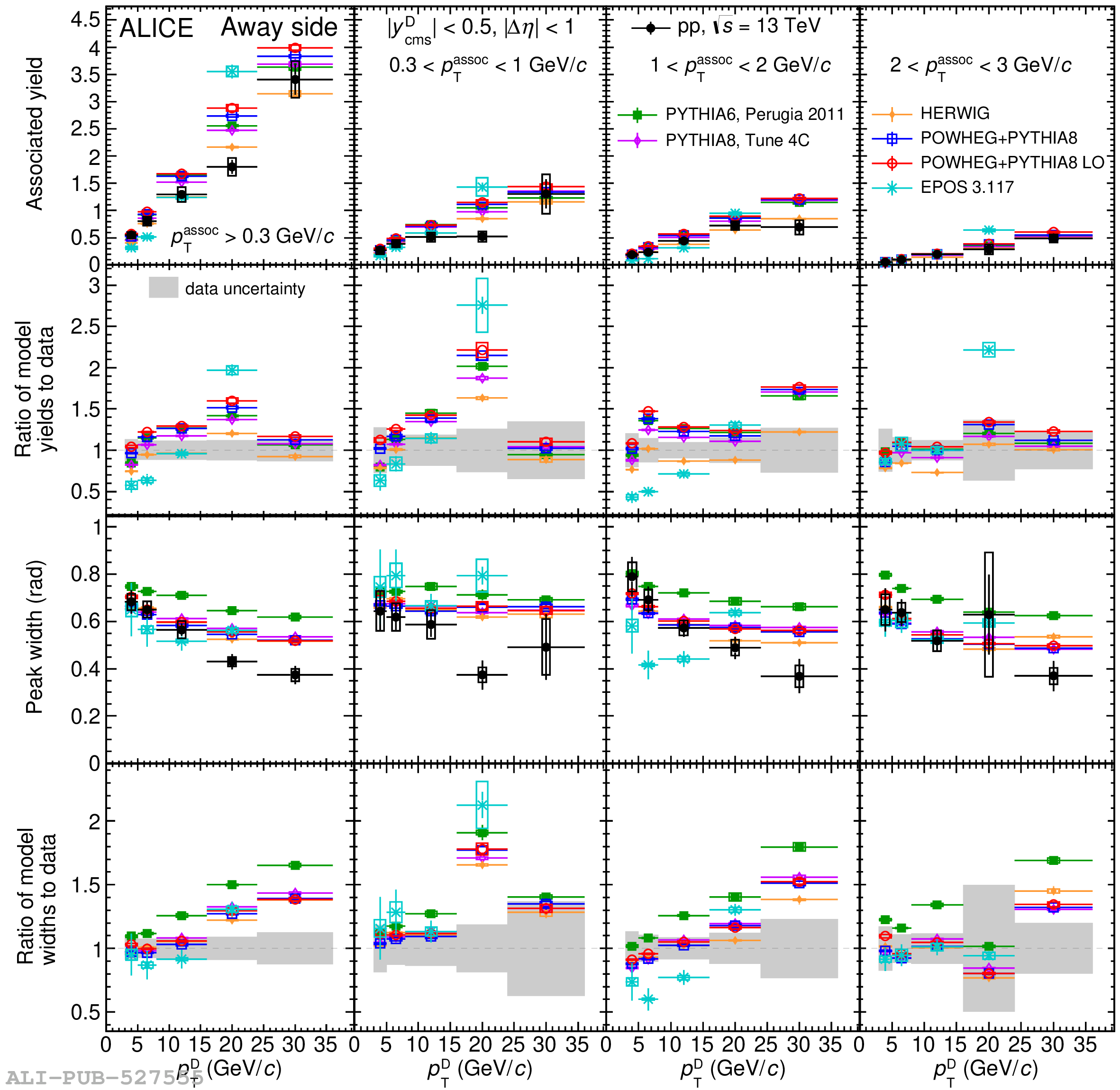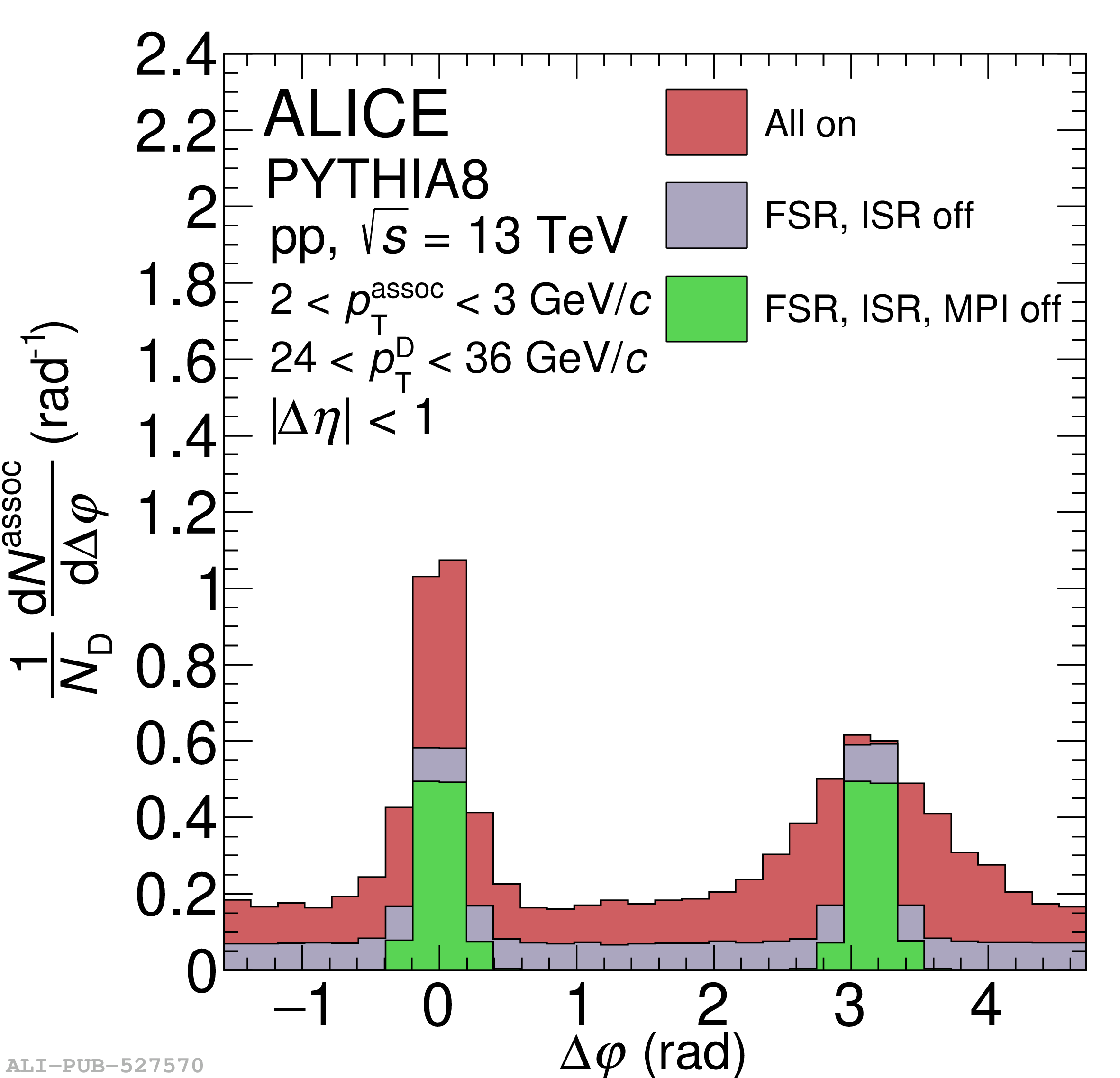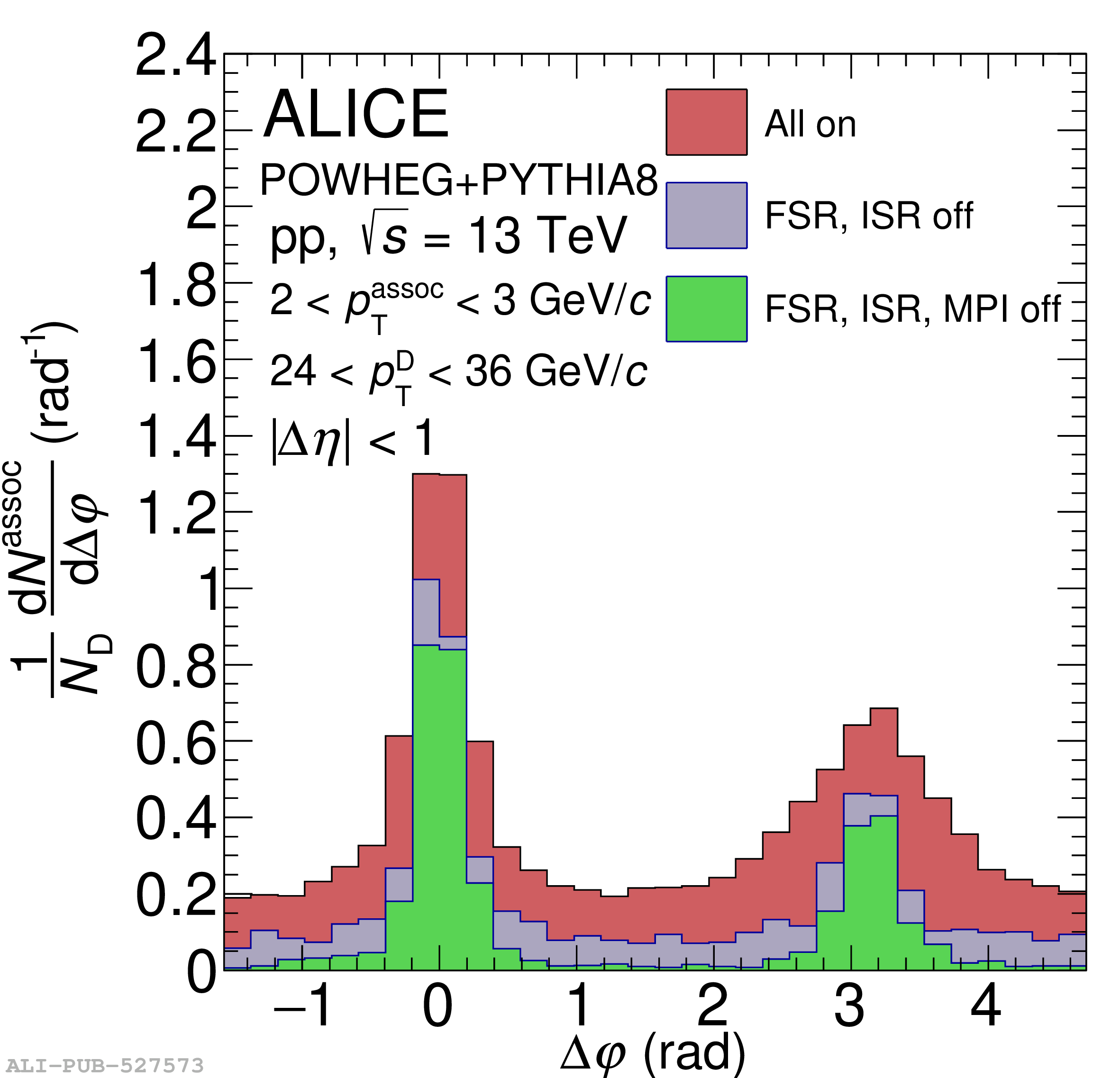Angular correlations of heavy-flavour and charged particles in high-energy proton-proton collisions are sensitive to the production mechanisms of heavy quarks and to their fragmentation as well as hadronisation processes. The measurement of the azimuthal-correlation function of prompt D mesons with charged particles in proton-proton collisions at a centre-of-mass energy of $\sqrt{s} = 13$ TeV with the ALICE detector is reported, considering D$^{0}$, D$^{+}$, and D$^{*+}$ mesons in the transverse-momentum interval $3 <~ p_{\rm T} <~ 36$ GeV/$c$ at midrapidity ($|y| <~ 0.5$), and charged particles with $p_{\rm T} > 0.3$ GeV/$c$ and pseudorapidity $|\eta| <~ 0.8$. This measurement has an improved precision and provides an extended transverse-momentum coverage compared to previous ALICE measurements at lower energies. The study is also performed as a function of the charged-particle multiplicity, showing no modifications of the correlation function with multiplicity within uncertainties. The properties and the transverse-momentum evolution of the near- and away-side correlation peaks are studied and compared with predictions from various Monte Carlo event generators. Among those considered, PYTHIA8 and POWHEG+PYTHIA8 provide the best description of the measured observables. The obtained results can provide guidance on tuning the generators.
Eur. Phys. J. C 82 (2022) 335
HEP Data
e-Print: arXiv:2110.10043 | PDF | inSPIRE
CERN-EP-2021-184
Figure group


